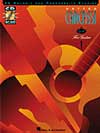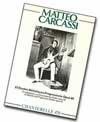| Solo Guitarist Network |
Matteo Carcassi (1792-1853)
|
| Lowest Price Guarantee |
Free Stuff - Direct Purchase Items
|
|
|
|---|
 Matteo Carcassi was born in Florence, Italy in 1792. He began his studies at the piano, but moved to guitar while still at a tender age. At the age of sixteen, he began a regular concert career that would last over 30 years. His first performances in Italy were warmly received warmly. At age eighteen he began his first tour of Germany. While there he met Antoine Meissonnier, with whom remained friends for many years, publishing many works together. The critical praise that he received in Germany led him to Paris in 1820 and London in 1822. Over the next several years, he toured regularly between Paris, London and Germany. Carcassi spent most of his time in Paris where he was a contemporary of the Ferdinand Carulli. His fame began to rival the older virtuoso, who up to this point, had remained the uncontested maestro of the guitar. Carcassi distinguished himself from his Neopolitan counterpart in many ways. He played without the use of fingernails, used the higher positions more extensively, had a stronger sense of melody, a larger array of effects and a different instrumental posture. He was one of the first to use classical position most accepted today, placing a foot stool under the left foot with the guitar placed upon the left knee. Carcassi returned to his native, Italy, for a series of concerts in 1836. Shortly thereafter, he settled down in Paris, abandoning most concert activity, concentrating instead on teaching guitar and piano, and publishing his work. Carcassi published over 80 works for the guitar, including many fantasias, themes with variations, and guitar sonatas. The two pedagogical works Opus 59 - "Complete Method for the Guitar," and Opus 60 - "25 Melodic and Progressive Etudes," are still in high demand today. Carcassi died in Paris on January 16, 1853. Matteo Carcassi was born in Florence, Italy in 1792. He began his studies at the piano, but moved to guitar while still at a tender age. At the age of sixteen, he began a regular concert career that would last over 30 years. His first performances in Italy were warmly received warmly. At age eighteen he began his first tour of Germany. While there he met Antoine Meissonnier, with whom remained friends for many years, publishing many works together. The critical praise that he received in Germany led him to Paris in 1820 and London in 1822. Over the next several years, he toured regularly between Paris, London and Germany. Carcassi spent most of his time in Paris where he was a contemporary of the Ferdinand Carulli. His fame began to rival the older virtuoso, who up to this point, had remained the uncontested maestro of the guitar. Carcassi distinguished himself from his Neopolitan counterpart in many ways. He played without the use of fingernails, used the higher positions more extensively, had a stronger sense of melody, a larger array of effects and a different instrumental posture. He was one of the first to use classical position most accepted today, placing a foot stool under the left foot with the guitar placed upon the left knee. Carcassi returned to his native, Italy, for a series of concerts in 1836. Shortly thereafter, he settled down in Paris, abandoning most concert activity, concentrating instead on teaching guitar and piano, and publishing his work. Carcassi published over 80 works for the guitar, including many fantasias, themes with variations, and guitar sonatas. The two pedagogical works Opus 59 - "Complete Method for the Guitar," and Opus 60 - "25 Melodic and Progressive Etudes," are still in high demand today. Carcassi died in Paris on January 16, 1853.
"Study in A," is beautiful piece which utilizes tuplets throughout. They are only notated in the first measure per common practice for pieces such as this. It might help to think of it in 12/8 time. Pay attention to the groupings, accenting the first note of each. Try using the rest stroke to bring out the melody, top voice, from within the arpeggio pattern. |
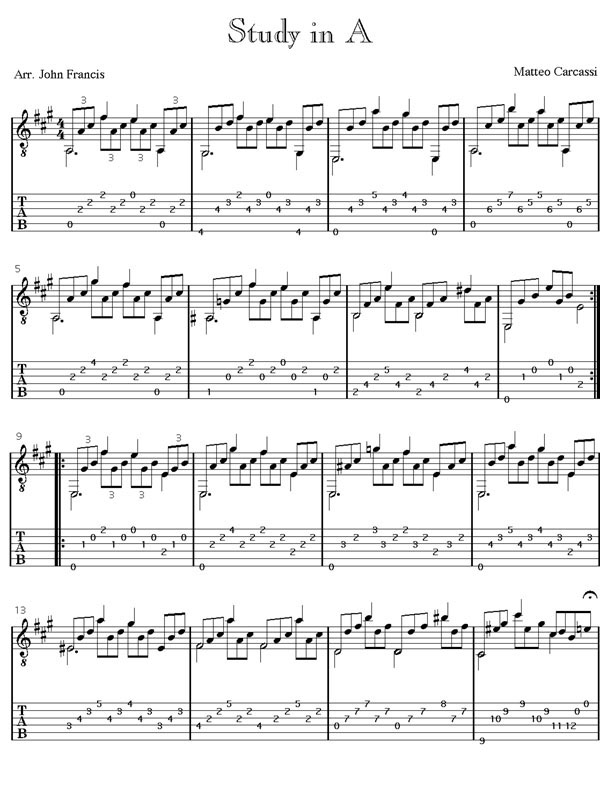
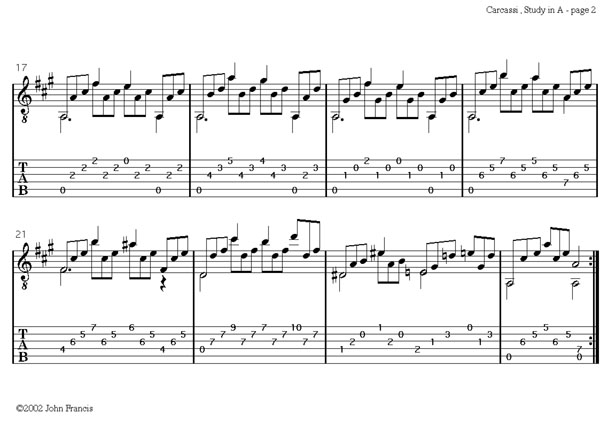
Opportunity To Study With The Arranger : Various Styles, All Levels
Wichita, Kansas Area - Optional Correspondence Lessons - Contact
lessons@sologuitarist.net
More Carcassi Guitar Music
Five Percent Discount on all shopping cart orders over $100 - Free Basic Shipping for orders over $200
No Credit Card? No Problem! Checks and money orders accepted for the following. Click Here For The Form.
Email for Worldwide Shipping Quotes
|
Matteo Carcassi: 25 Etudes Melodiques Op. 60 by Matteo Carcassi
|
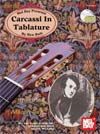 |
Carcassi In Tablature arranged and recorded by Ben Bolt
|
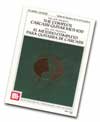 |
The Complete Carcassi Guitar Method compiled by Mel Bay & Joseph Castle
|
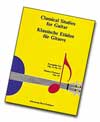 |
Classical Studies for Guitar edited by Peter Paffgen
|
Email for Worldwide Shipping Quotes
No Credit Card? No Problem! Checks and money orders accepted for the titles listed above.
Click Here For The Form.

Return To The Sologuitarist Network
![]()
This is just a counter.
